|
|
Post by Arjan Hut on Jun 5, 2019 7:41:57 GMT -5
135 Beverly Oliver's Super 8 Yashica color movie of the assassination
Related:67 Bob Jackson’s Houston Street Picture111 “The Ralph Simpson movie”"Standing on the south side of Elm Street (opposite Zapruder) and using a Super 8 Yashica movie camera with zoom lens, this woman filmed the entire assassination. Using a better camera, and much closer to the President, her view was not obstructed at a crucial moment by a road sign and her film would certainly have revealed the presence of gunmen on the knoll. Too, the unidentified Umbrella Man could be clearly seen, as could the face of the Depository building.  It was confiscated from her by two men who identified themselves as agents of the F.B.I. The agents approached her at her place of employment, the Colony· Club, and asked for the film. She was told that they would process the film, view it and return it to her within ten days. The film was not returned to her and she received no explanation." (Gary Shaw, Cover-Up, 1976) 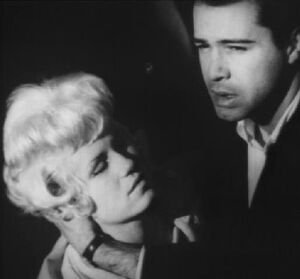 Beverly Oliver (with Gregg Pappas) in 'Hot Blooded Woman' (1965) Beverly Oliver (with Gregg Pappas) in 'Hot Blooded Woman' (1965)“She is very convincing, but her claims are not." (Denis Morissette) Beverly Oliver's HSCA interviewInterviewer: While the taperecorder was off I showed you a picture from the book Cover Up at page 53 which was supposedly of the Babushka Lady, that mr. Shaw refers to in his book. And I asked you wether or not you were able to identify that photo was being of yourself and you indicated you couldn't be sure either way. Is that correct. Beverly: Yeah yeah. I: The scarf that that woman is wearing in the photograph, is that, how would you describe it, is it similar or not similar to the attire that you were wearing? B: It's very similar yes it is. I: Now the photograph seems to show or appears to show that the woman has dark hair. At that time what color was your hair? B: My hair was blond, really quite blond, but I often wore wigs of different colors. I: You had dark wigs? B: Yeah. I: So you have read the area's in Cover-Up about the Babushka Lady is that correct? B: Aha I: Mr Shaw has interviewed you? B: (chuckles) Yeah. I: Okay. The photographs on page 52 and 53 of Cover Up:  From: NIGHTMARE IN DALLAS: A REVIEW
(by John Delane Williams, published in The Fourth Decade, 1997): About the camera:
1963 brought additional complexities to the life of
young Miss Oliver. She accompanied Ruby to New
Orleans (Oliver doesn't give a time, but Kantor puts
this in June, 1963) as Ruby was booking Jada (Janet
Conforto) to dance in his club. Ronco returned from
New York, not with divorce in hand, but rather with a
not yet publicly available Yashika movie camera for
Beverly. Ruby tried to talk Ronco out of the camera; the
best he could get was that Ronco said he would get Ruby
one "when he could get his hands on another one".
About Larry Ronco:The relationship with Larry Ronco was short-lived;
Ronco changed after the assassination; his pursuit of
Oliver became so over-bearing that she obtained a
restraining order. Later, she heard that Ronco committed
suicide.
Nothing is mentioned about what happened to the camera. 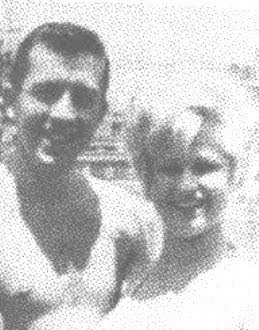 Larry Ronco and Beverly Oliver Larry Ronco and Beverly Oliver
|
|
|
|
Post by Arjan Hut on Jun 6, 2019 8:56:16 GMT -5
136 George de Mohrenschildt's CIA affiliate personnel file
Compare:
22 Oswald's pre-Dec 1960 CIA-File 38 Well over 2,000 pages on CIA-asset June Cobb120 George De Mohrenschildt's address book121 330 CIA Joannides recordsTexan George Brown of Brown and Root was LBJ's chief financial sponsor. He also employed, 1958-1963, George DeMohrenschildt, Oswald's "closest friend" for the CIA in Dallas. Previously, DeMohrenschildt had worked for LBJ backer John Mecom. Oil barons Mecom, Murchison, Sid Richardson and H.L. Hunt were all described as his close friends, as well as then-oilman George Bush. These men met at the Dallas Petroleum Club and other private gathering spots. Among their associates were Harold Byrd (owner of the Texas School Book Depository), Dallas Mayor Cabell, Ted Dealey (publisher of the Dallas Morning News), and Abraham Zapruder, who filmed the assassination. De Mohrenschildt wrote to Vice President Johnson on April 17,1963. LBJ aide Walter Jenkins replied April 18! On April 23, LBJ's military aide Col. Howard Burris wrote to Jenkins suggesting that LBJ be kept "informed to the maximum extent possible in as many areas as possible...that he be more nearly prepared to assume the reins of government in case he is called upon to do so." Three days later, Burris (and possibly LBJ) met with DeMohrenschildt in Washington. On May 20, LBJ and DeMohrenschildt definitely met. In November 1964, soon after the Warren Report's release, DeMohrenschildt's CIA affiliate personnel file was destroyed, and the CIA's Angleton began intercepting DeMohrenschildt's mail, even though George's brother Dimitri (formerly with Time-Life) had long published a CIA-subsidized magazine. In 1969, DeMohrenschildt told a family friend that H. L. Hunt was behind the assassination. Though Far Right, Hunt supported LBJ in 1960. According to former intelligence operative Richard Case Nagell, Hunt also ran paramilitary operations, employing some CIA people. (Martin Shackelford, A Celebration of Freedom: Latest Research and Secrets from the Files, Part Seven, Review Magazine, 1996)
|
|
|
|
Post by Arjan Hut on Jun 7, 2019 9:45:37 GMT -5
137 HSCA Records of Richard A. Sprague
See also:29 The missing section from the Lopez Report57 The Fenton Report From Bill Kelly's JFK Countercoup, June 5, 2019: "House Select Committee on Assassinations (HSCA) Records of Richard Sprague, Esq. – the first chief counsel to HSCA. There are thousands of HSCA records in the file of the second chief counsel to HSCA G. Robert Blakey – but none for Richard Sprague. There is a file on Richard Sprague, but that is another Richard Sprague, a photo-computer expert who advised the HSCA. I took a copy of Jim Braden’s 1948 Camden arrest report to Sprague’s Philadelphia law office when he was first appointed chief counsel. After the HSCA was disbanded, I received a call from G. Robert Blakey, the second chief counsel, who requested a copy of Braden’s arrest report as he was writing a book about the mob involvement in the assassination. I told Blakey that I had given a copy to Sprague, and Blakey said that Sprague took all of his files with him. Sprague’s assistant Bob Tannenbaum, wrote in his book about the HSCA, that Sprague’s secretary took many of the records, and she has since passed away. Sprague is now in his 90s and his son, who runs the law office, says they have no HSCA files, but they must." Richard A. Sprague. Not to be confused with Richard E. Sprague, whose
book The Taking of America 1 2 3 can be downloaded on pdf HERE
|
|
|
|
Post by Arjan Hut on Jun 8, 2019 12:38:22 GMT -5
138 One "Vial, Hamilton, Koch & Knox"-file on Jack Ruby
"According to Silvia Odio's close friend, Lucille Connell, she received a call from Silvia's sister Sarita who told her that Silvia had fainted and was in the hospital. Sarita also told her why Silvia had fainted and the fact that Silvia had met Oswald and that he had come to her apartment. Connell could not recall exactly when Sarita called ; she said it was either the day of the assassination or the day after. Connell said that Sunday, however, she was speaking on the telephone to a friend of hers, Mrs. Sanford Pick, then working as a receptionist in a Dallas law firm office, when they both saw Ruby shoot Oswald on their television sets. Connell recalled : "And she said to me, `Oh my goodness, Ruby was in our office last week and had power of attorney drawn for his sister.'"  Jack Ruby with his sister Eva Grant Jack Ruby with his sister Eva Grant
Connell said that later that same day she happened to be speaking with another friend, Marcella Insua, the daughter of the head of the Dallas Cuban Relief Committee. Connell mentioned to Insua what her other friend had said about Ruby being in her law office. Insua, Connell said, happened to have a class of American children to whom she was teaching Spanish. In that class, she got into a discussion of the Kennedy assassination and mentioned that she knew someone who knew someone who had some dealings with Ruby. It also happened that there was a son of a local FBI agent in Insua's class. That was how the FBI subserviently came to contact Connell and learn about the Odio incident." (Gaeton Fonzi, HCSA appendices & Hearings vol. 10, page 28) Note : It was not possible to resolve the inconsistency of the substance of this and certain related FBI reports. (FBI report) DL 44-1639 stated only that Connell said that Odio told her that she knew Oswald and that he had spoken to groups of refugees in Dallas. Nothing is noted about a visit of three men. Connell told a committee investigator (ref . 50. memorandum, p. 3) that she did not recall ever telling the FBI that. Neither did the FBI report of the Bureaus initial interview with Odio on Dec. 19, 1963 (Report DL 100-10461) mention that she had knowledge of Oswald speaking to refugee groups. Neither did the FBI interview with Connell note Connell's report of her conversation with her friend, Mrs. Sanford Pick, regarding Ruby's visiting the law firm where Pick worked. Connell said she is positive she told that to the FBI. The committee found that neither Pick nor the attorney who handled Ruby's case at the law firm were questioned by the FBI (ref. 50, memorandum, pp. 4-6) . Because neither Pick nor the attorney, Graham R. E. Koch, could specifically recall Ruby requesting power of attorney for his sister, and because, according to Koch, his firm's records on the case were later routinely destroyed (ref. 50, memorandum), the committee was unable to pursue the possibility further. (Gaeton Fonzi, HCSA appendices & Hearings vol. 10, footnote nr 126)
|
|
|
|
Post by Arjan Hut on Jun 9, 2019 13:06:40 GMT -5
139 A study of Beverly Oliver's feet
Related:135 Beverly Oliver's Super 8 Yashica color movie of the assassination Was Beverly Oliver Too Thin to be the Babushka Lady? A nagging question is the issue of weight. The "Babushka Lady" is termed "stocky" by Posner [29, p. 2601. Others have questioned whether the "Babushka Lady" could possibly be the youthful Miss Oliver (including recently Whitmey [301). Pictures of the "Babushka Lady" in Oliver's book (slipcase, 180, 181, 182) do indeed appear to be someone heavier than pictures of Beverly shown on page 177 (taken in 1963, probably a publicity photo) page 178 (taken at Six Flags, supposedly in 1963, but probably in 1962) and at her wedding in 1966. (p. 177) Two other pictures from 1963 (p. 178, with Larry Ronco and one taken in October by Ruby, p. 177) would indicate a person whose weight could fluctuate rather rapidly. Not including the Six Flags picture (probably from 1962), the three 1963 pictures show Oliver carrying more weight than earlier or later. Oliver says that she obtained a picture of the "Babushka Lady" and had blow-ups done of the feet; Oliver has a particular deformation involving the placement and small size of her little toe. [31] Perhaps Miss Oliver can be persuaded to share these pictures with the research community.  (John Delane Williams, NIGHTMARE IN DALLAS: A REVIEW, The Fourth Decade, 1997)
|
|
|
|
Post by Arjan Hut on Jun 10, 2019 12:51:12 GMT -5
140 Large skull fragment from presidential limousine
Related:4 John F. Kennedy's brain15 The original air force one tape40 The original autopsy notes by Commander James J. Humes50 The Harper fragment69 Bullet found in JFK's limousineA large skull fragment, seen in the limousine at Parkland by Secret Service agent Clint Hill, and recovered from the car on the flight back to Washington by his colleague Sam Kinney, disappeared from the record after Kinney turned it in. (Kinney) told me twice that he saw the back of JFK's head come off immediately when the fatal shot struck him. "It was the right rear--I saw that part blow out." He added that his windshield and left arm were hit with blood and brain matter immediately after the head shot. 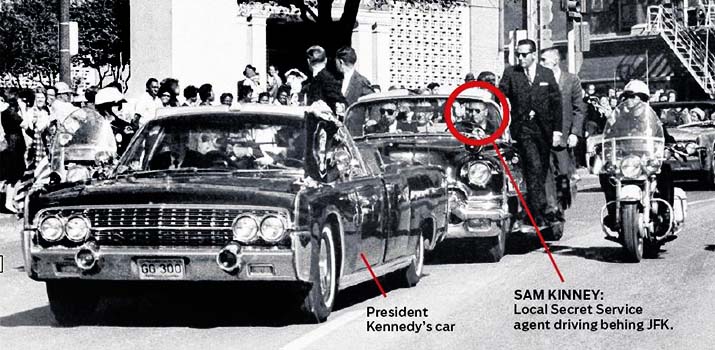 Once at Parkland Hospital, Kinney helped remove the President from the back seat of the car, with help from Clint Hill, Roy Kellerman, and Dave Powers. "His brain was blown out," Kinney said, "...there was nothing left!" Kinney and S/A George W. Hickey, Jr., both members of the White House Garage Detail (chauffeurs) drove the follow-up and the limo, respectively, back to Love Field to be put aboard a C-130 transport. Once the cars were secured on the plane, it took off for Washington with Kinney, Hickey, and several members of the 76th Air Transport Squadron from Charleston, SC. However, it was Kinney who made a most valuable discovery: the piece of the back of JFK's head lying in the rear seat of the bloody limousine, exactly where Clint Hill told the Warren Commission he saw the "right rear" piece . Fellow agents Kellerman and Jerry Behn confirm this fact. Kinney added that the fragment was "clean as a pin" and that it resembled a "flowerpot" or "clay pot" piece, adding, "It was a big piece--half his head was gone." When pressed as to the anatomical orientation of the fragment, he said, "I don't know what else it could have been but the back of his head." Realizing the obvious significance of this discovery (hours BEFORE the "official" limousine search made by ASAIC Floyd Boring), Kinney put in a phone patch to Admiral George Burkley (unfortunately, like many other events, this radio traffic no longer exists on the heavily edited Air Force One radio tapes currently available) Kinney had the fragment in his suit pocket during his talk with Burkley and for the course of the flight back to DC. Kinney indicated that he and Burkley were good friends, noting he has Burkley's photo, along with JFK and Truman, on his wall. When asked about Burkley and the autopsy concerns, Kinney indicated, "Well, you have to give orders to people...they [who?] were very hard on Dr. Burkley." (Vince Palamara interviews with Sam Kinney, 3/5/94 and 4/15/94) 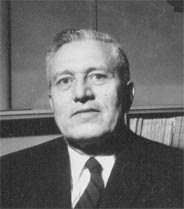 Dr. Burkley Dr. Burkley
|
|
|
|
Post by Arjan Hut on Jun 11, 2019 12:25:02 GMT -5
141 Lee Harvey Oswald's 1959, 3rd quarter, U.S. Marine Corps earnings
See also:13 Lee Harvey Oswald's army intelligence file22 Oswald's pre-Dec 1960 CIA-File-July 14, 1997: ARRB Senior Attorney Ron Haron sends a letter to the Social Security Administration which includes, as attachment A, Warren Commission Documents 353 and 353a, which had originally been withheld from the public as restricted Social Security Administration earnings information -- but which Mr. Haron's letter indicates had been open since 1965. CD 353a is an extract of information on Lee Harvey Oswald's employment history that was provided to the Warren Commission on February 3,1964: it provided the Warren Commission with Oswald's employers, by quarter, from 1955 through his death in November 1963.  Oswald in 1959 Oswald in 1959
The amounts earned from each employer (by quarter) were withheld from the extract by HEW in 1964, but with that exception, this open document provides a wealth of information about whom Oswald was working for, and when. [NOTE: This document contains one very remarkable entry, which the author will discuss in more detail later in this memo, namely: "1959, 3rd quarter, no earnings reported;" remarkable because Oswald's official discharge date from the U.S. Marine Corps is September 11, 1959, meaning that there should have been earnings reported between July 1, 1959 through September 11, 1959.] (...) -C.D. 353a: In Attachment A to enclosure 13, the entry "1959, 3rd quarter, no earnings reported" cries out for explanation, since Oswald did not separate from active duty service in the U.S. Marine Corps until September 11, 1959. Theoretically, all of his earnings received from the Marine Corps for the period July 1, 1959 through September 11, 1959 should have been reported. The author did not see any documents during his examinations of tax information as an ARRB staff member that provided an explanation for this-- or that anyone else had ever even noticed the discrepancy. 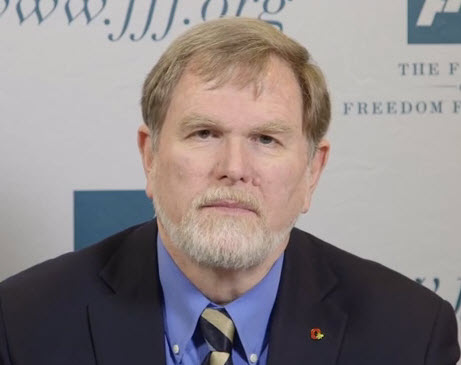 Douglas Horne Douglas Horne
(Doug Horne, MEMORANDUM FOR FILE, SUBJECT: Questions Raised by John Armstrong and Carol Hewett
About Lee Harvey Oswald's Tax and Earnings Records, September 23, 1998)
|
|
|
|
Post by Arjan Hut on Jun 12, 2019 12:10:25 GMT -5
142 Oswald's 1957 return
-C.D. 101a: In enclosure (24), Deputy Commissioner of the Internal Revenue Service Bertrand M. Harding
wrote to the Treasury General Counsel, Mr. G. D'Andelot Belin, "We have not located a 1957 return for
Oswald. He is known to have served in the Marine Corps during that year." The author did sight Social
Security tax information indicating that Lee Harvey Oswald served in the Marine Corps during the entire
year of 1957, so it is unclear whether the inability of the IRS to find a return for that year is significant or
not.
(Doug Horne, MEMORANDUM FOR FILE, SUBJECT: Questions Raised by John Armstrong and Carol Hewett
About Lee Harvey Oswald's Tax and Earnings Records, September 23, 1998)
|
|
|
|
Post by Arjan Hut on Jun 13, 2019 13:10:53 GMT -5
143 Additional bullet fragments from Connally's wounds
Compare:64 Nearly whole bullet removed from JFK's body 69 Bullet found in JFK's limousine 105 a Four bullet fragments
b Dennis David memorandum describing four bullet fragments Erasing the Past...DiscussionsNEITHER THE pathologists panel nor committee investigators interviewed Charles W Harbison, a state highway patrolman who told The News in April 1977 that he recalled turning over to an FBI agent more than the three bullet fragments the Warren Commission asserted were removed from Connally's wrist wound. Harbison said he was guarding Connally's recovery room in Parkland Memorial Hospital on either Nov. 25 or 26, 1963, when someone stepped from the room into the hall and gave him more than three metallic fragments purportedly taken from Connally's wounds. Harbison's story takes on added importance when it is known that Miss Audrey N. Bell, then supervisor of the operating room at Parkland, remembers she also placed four or five bullet fragments from Connally's wounds in an envelope at least three days earlier, on Nov. 22. They were delivered several hours later to Capt. Will Fritz, chief of Dallas police homicide.  Five bullet fragments from Gov. John Connally's arm and wrist wounds were given by nurse Audrey Bell to the Secret Service, after which they disappeared from the publicly acknowledged evidence. In her HSCA interview, she describes in detail how she placed the fragments in a vial, a one-ounce medicine glass, then sealed it in a carefully labeled "foreign body" envelope before handing it to Secret Service agent Forrest Sorrels. (Earl Golz, JFK panel never called 2 witnesses, Dallas Morning News, September 9,1978) Gov. Connally, 1st interview after Kennedy execution
|
|
|
|
Post by Arjan Hut on Jun 14, 2019 10:39:45 GMT -5
144 One pack of cigarettes
Compare:60 One TSBD hammer 68 One portion of (partially eaten?) fried chicken "One further important evidentiary detail is noteworthy. Charles Givens testified that his reason for returning to the sixth floor was to retrieve his cigarettes. Reporters recall that Captain Fritz announced to the press on the night of the assassination that along with the chicken bones and soda bottle, there was a cigarette package next to the sniper's nest window (Sauvage, p. 35; Meagher, p. 39). The report is corroborated by photographs of police Detective Marvin Johnson leaving the Book Depository carrying the lunch bag, the Dr. Pepper Bottle and, a cigarette package. Lee Harvey Oswald did not smoke (9WH244).  "Oswald did not smoke and would fly into a rage if his wife lit one." ( Don Thomas, Rewriting History: Bugliosi Parses the Testimony)
|
|




















